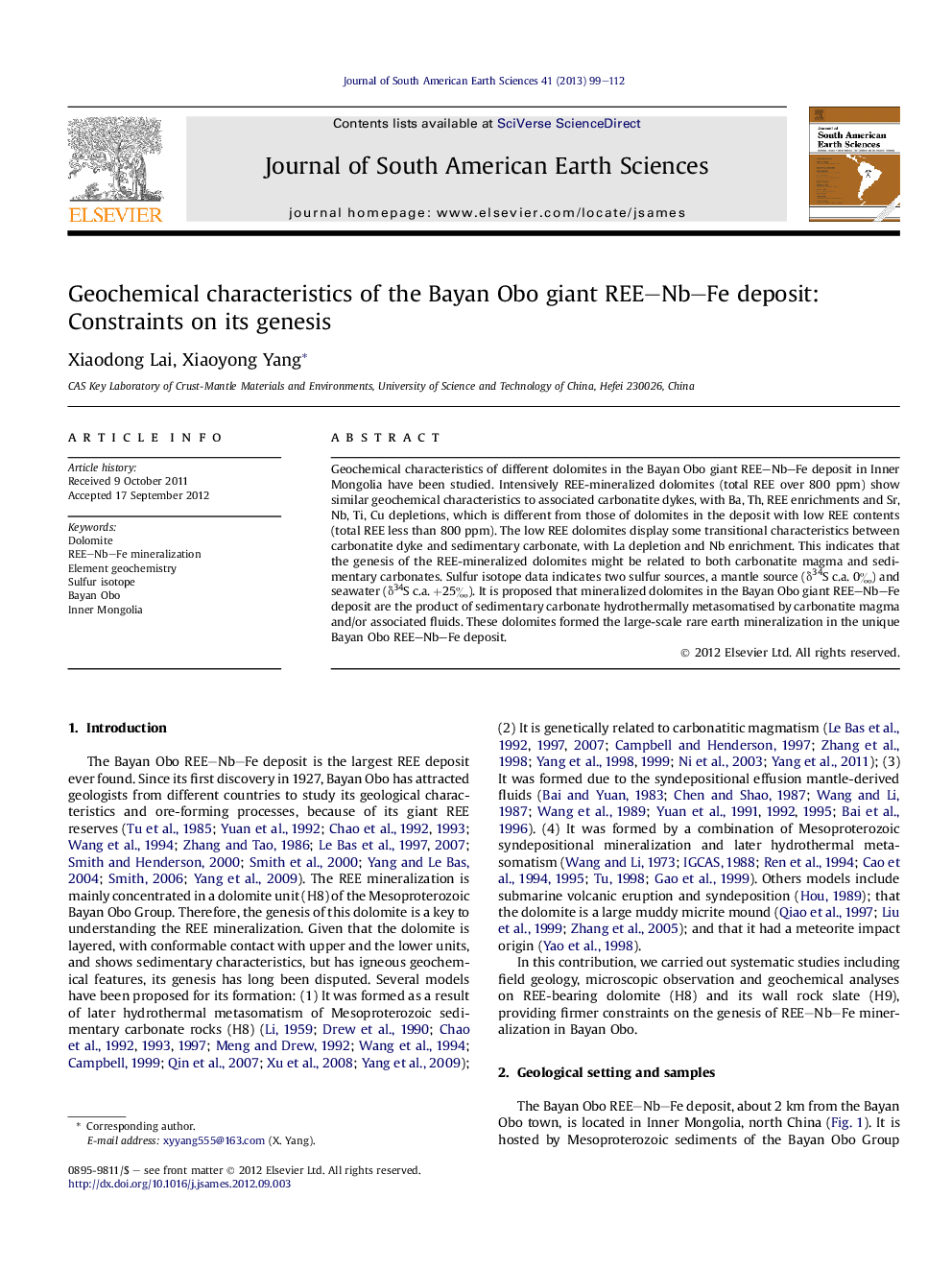| Article ID | Journal | Published Year | Pages | File Type |
|---|---|---|---|---|
| 4682461 | Journal of South American Earth Sciences | 2013 | 14 Pages |
Geochemical characteristics of different dolomites in the Bayan Obo giant REE–Nb–Fe deposit in Inner Mongolia have been studied. Intensively REE-mineralized dolomites (total REE over 800 ppm) show similar geochemical characteristics to associated carbonatite dykes, with Ba, Th, REE enrichments and Sr, Nb, Ti, Cu depletions, which is different from those of dolomites in the deposit with low REE contents (total REE less than 800 ppm). The low REE dolomites display some transitional characteristics between carbonatite dyke and sedimentary carbonate, with La depletion and Nb enrichment. This indicates that the genesis of the REE-mineralized dolomites might be related to both carbonatite magma and sedimentary carbonates. Sulfur isotope data indicates two sulfur sources, a mantle source (δ34S c.a. 0‰) and seawater (δ34S c.a. +25‰). It is proposed that mineralized dolomites in the Bayan Obo giant REE–Nb–Fe deposit are the product of sedimentary carbonate hydrothermally metasomatised by carbonatite magma and/or associated fluids. These dolomites formed the large-scale rare earth mineralization in the unique Bayan Obo REE–Nb–Fe deposit.
► The REE-bearing dolomites are divided into intensively and weakly REE mineralization according to their total REE contents. ► Geochemical differences between the two kinds of dolomites are identified. ► Ore forming fluids have been discussed and constrained. ► The dolomite is proven to be the product of sedimentary carbonate metasomatised by carbonatite magma and/or associated fluids.
